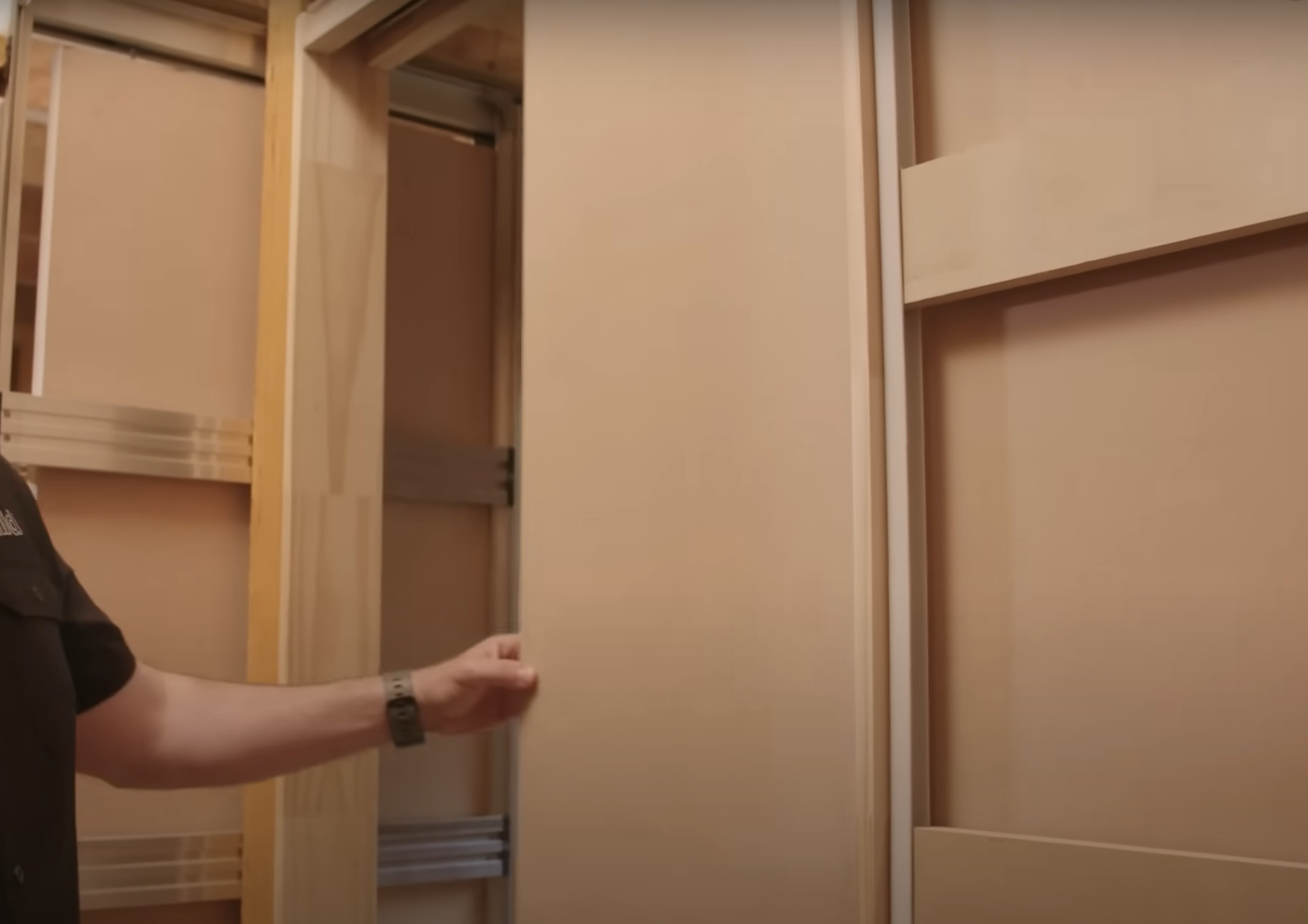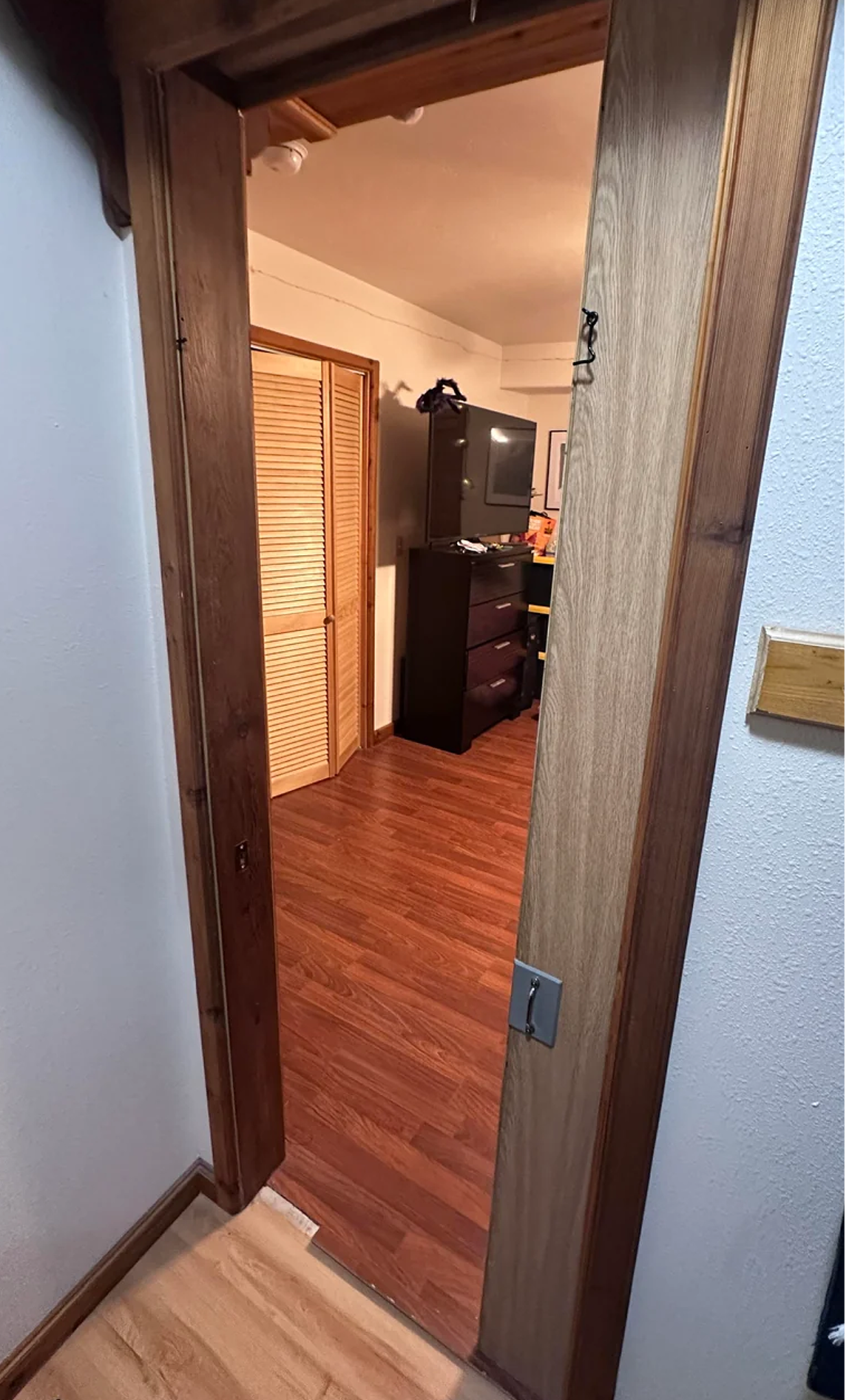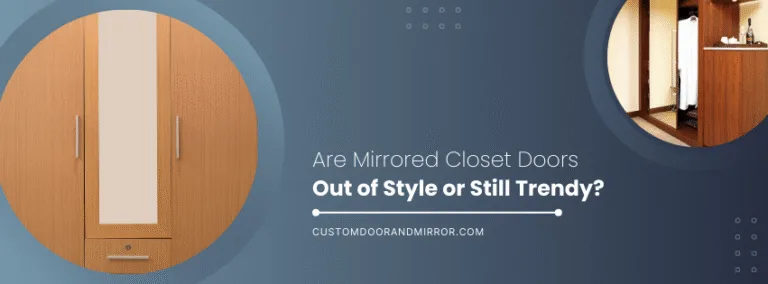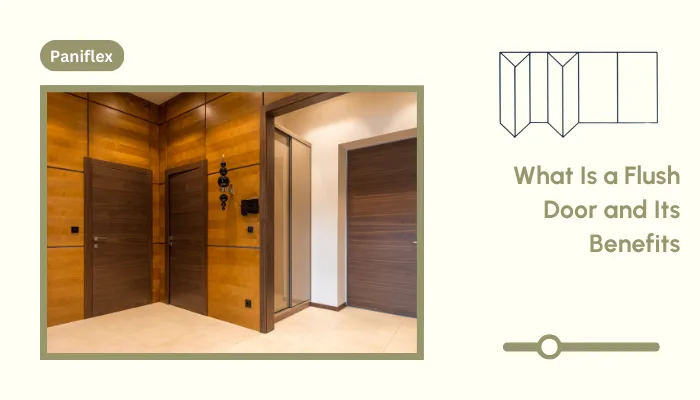Pocket doors have long been valued for their ability to save space and add clean, modern lines to interior design. But when it comes to corners, they offer even more, unlocking design possibilities that traditional doors cannot achieve. Whether you are working on a residential renovation or a large commercial project, corner pocket doors allow for seamless transitions and creative spatial solutions.
We understand how challenging it can be to design functional and appealing door systems for tight or unconventional spaces. This guide explores innovative corner pocket door ideas, practical considerations, and fabrication insights to help you deliver flawless results every time.
Ready to experience the benefits of custom closet doors? Explore our range of Paniflex products now.
What you need to know:
- Explore creative design ideas for corner pocket doors, from L-shaped layouts to glass panel systems.
- Knowing these design options helps you plan functional and appealing solutions for challenging spaces.
- Understand key factors like framing, materials, and hardware for flawless installations.
- Learn about common challenges and practical solutions to ensure smooth operation and longevity.
Why Are Pocket Doors Ideal for Corner Applications?
Corner spaces often present unique design challenges, such as tight layouts, awkward traffic flow, and the need to maintain openness without sacrificing privacy. Pocket doors resolve these issues by sliding discreetly into wall cavities, freeing up valuable floor area and enhancing a room’s visual appeal.
These are a few benefits of pocket doors:
- Maximizes usable floor space in compact or high-traffic areas.
- Allows for seamless transitions between adjoining rooms.
- Eliminates door swing clearance, making layouts more flexible.
- Supports minimalist design with concealed panels and hardware.
- Enables creative use of materials like glass for light flow or wood for warmth.
With their functional and design advantages, pocket doors are a natural choice for corners. But how they are designed and applied makes all the difference in a project’s success. Let us explore creative design ideas that show the full potential of corner pocket door systems.
Suggested Watch: Learn how to install pocket doors in this video.
Design Ideas for Corner Pocket Doors

Corner pocket doors unlock creative opportunities for optimizing space and enhancing design flow. From seamless room dividers to architectural statements, their configurations can adapt to a wide range of interior styles and functional needs.
Here are some of the most effective design ideas to inspire your next project.
1. Double Pocket Doors Meeting at a Corner
A pair of sliding pocket doors that meet at a corner and disappear into adjacent walls allows for a completely open corner space when needed. This design offers the flexibility to divide or open large spaces with ease, making it perfect for a variety of modern layouts.
Key characteristics:
- Perfect for connecting indoor and outdoor spaces without any obstructions, seamlessly blending the two areas.
- Ideal for large living areas where flexibility is key, enabling quick transitions from private to open spaces.
- Can incorporate glass panels to maintain sightlines and allow natural light to flow freely, enhancing the room’s brightness and openness.
Why It Works:
This design gives the option of maintaining openness while still having the ability to close off spaces for privacy when required. Its versatility makes it highly suitable for modern, fluid layouts that need to balance privacy with connection.
2. L-Shaped Pocket Door Systems
This layout uses two doors that slide at 90 degrees into a corner, creating a clean, modern solution for closing off spaces without bulky swinging doors. The L-shape optimizes space usage and allows for smooth transitions between rooms.
Key characteristics:
- Supports open-plan designs by closing off zones when privacy is needed, ensuring rooms can be used independently while maintaining the open feel.
- Works well in kitchens adjoining dining or utility areas, allowing for flexible space management while minimizing disruptions in the flow of the room.
- Requires precise corner framing and track alignment to ensure smooth operation and proper door movement without issues.
Why It Works:
The L-shaped pocket door system is ideal for maximizing space in layouts where you need the option to separate zones without compromising on the open-plan design. It’s perfect for areas like kitchens and dining spaces that benefit from occasional separation.
3. Glass Pocket Doors
Glass pocket doors combine the functionality of traditional pocket doors with the transparency of glass, offering separation without obstructing light or sightlines. This design is perfect for spaces that need definition but still benefit from an open, airy feel.
Key characteristics:
- Frosted or textured glass options provide privacy without blocking natural light, ideal for areas like offices or bathrooms.
- Frameless designs seamlessly complement minimalist interiors, adding a modern and elegant touch.
- Common in offices and residential areas that need spatial definition without visual barriers, maintaining openness while adding privacy where needed.
Why It Works:
Glass pocket doors strike the perfect balance between privacy and openness, allowing spaces to be defined without compromising on the flow of light. Their modern aesthetic suits a wide range of contemporary interior styles, especially minimalist and industrial designs.
4. Sliding Panels with Corner Track Systems
Specially designed corner track systems enable sliding panels to move smoothly around corners, offering a unique solution for larger, more dynamic spaces. This system works well for spaces that require continuous movement or dramatic visual impact.
Key characteristics:
- Enables continuous movement across walls, making it ideal for retail or hospitality settings where flexibility and ease of access are crucial.
- Accommodates large panels for a dramatic visual effect, allowing for bold design statements that enhance the space’s character.
- Demands advanced hardware to ensure reliable, smooth transitions, requiring high-quality tracks and mechanisms to maintain performance over time.
Why It Works:
These sliding panels offer ultimate flexibility and visual appeal, making them suitable for commercial spaces that require both functional and striking design elements. The advanced system ensures smooth operation even with large panels.
These design ideas showcase some of the most innovative and effective ways to enhance your space with sliding and pocket door systems. However, you need to know which type of pocket door works best in different situations.
Suggested Read: Guide To Sizing A Rough Opening For Bifold Doors
Pocket Door Corner Applications in Different Spaces
Corner pocket doors are not just a design statement. They are practical solutions that fit a variety of environments. Their ability to optimize space and create seamless transitions makes them an excellent choice for both residential and commercial projects.
1. Residential Spaces
Pocket doors are increasingly popular in residential spaces due to their ability to maximize space and enhance the flow between rooms. These doors provide a clean, seamless look while offering flexibility and functionality.
They are:
- Ideal for connecting kitchens and dining areas or living rooms and patios.
- Perfect for walk-in
- and en suite bathrooms in compact layouts.
- Enhances open-plan designs by providing flexible room division without visual clutter.
Pro Tip: When installing pocket doors in residential spaces, choose materials and finishes that match your home’s overall aesthetic for a cohesive look.
2. Commercial Spaces
In commercial spaces, pocket doors offer the perfect combination of practicality and design. They allow for easy transitions between areas while maintaining privacy when necessary, making them a go-to solution for businesses and public spaces.
They are:
- Excellent for conference rooms that need temporary separation in offices.
- Popular in hospitality suites and retail spaces where openness and privacy alternate.
- Great for supporting accessibility and flow in high-traffic environments like healthcare or educational facilities.
Pro Tip: In commercial settings, opt for doors with enhanced durability and soundproofing features. This is especially necessary in areas like conference rooms or healthcare facilities where noise control is critical.
From the Community: Should you choose pocket doors or not? Find insights in this Reddit thread.
Factors to Consider When Choosing Corner Pocket Doors

Designing and specifying corner pocket doors requires more than just a style vision. Structural limitations, technical details, and long-term usability all play a critical role in achieving a successful outcome.
These key factors will help ensure your design performs as beautifully as it looks.
- Structural Framing Requirements: Corner pocket systems demand precise framing to support concealed tracks and ensure stability.
- Wall Thickness and Cavity Depth: Sufficient space within walls is essential for housing sliding panels without compromising strength.
- Hardware and Track System Quality: Investing in high-grade tracks and rollers prevents alignment issues and ensures smooth, long-lasting operation.
- Material and Finish Compatibility: Materials must balance style, weight, and environmental conditions to avoid warping or excessive wear.
- Acoustic and Privacy Considerations: Specialized seals or acoustic panels may be needed in noise-sensitive or high-privacy spaces.
- Maintenance Access: Plan for future access to concealed hardware for adjustments or repairs without major wall modifications.
Even with careful planning, corner pocket doors can present installation and operational challenges. Next, we will explore common issues professionals encounter and practical solutions to address them.
Suggested Read: DIY Guide: Installing Sliding Closet Doors on Concrete
Common Challenges and Solutions with Pocket Doors
Corner pocket door systems introduce unique technical challenges, especially in custom or retrofit applications. Recognizing these issues early helps professionals deliver flawless installations and long-lasting performance.
Here’s a look at some of the common issues you may face:
1. Framing Limitations in Existing Structures
Older buildings may lack the wall cavity depth required for pocket systems. This can make retrofitting particularly difficult without major structural changes.
Solution: Opt for slimmer door panels and compact track systems where possible. Engage structural engineers early to assess reinforcement needs for proper support.
2. Alignment and Track Installation Issues
Misaligned tracks lead to uneven sliding and premature wear on rollers. Corner systems amplify these problems due to their intersecting tracks.
Solution: Use precision-engineered hardware and ensure meticulous installation with laser levels. Prefabricated frames with integrated tracks can also reduce onsite alignment errors.
3. Sound and Light Leakage
Pocket doors often have gaps that compromise acoustic performance and privacy. This is more pronounced at corners where two panels meet.
Solution: Specify acoustic-rated doors with concealed perimeter seals. Adding overlapping panels at the corner junction improves both sound insulation and light blocking.
4. Hardware Maintenance in Concealed Systems
Accessing concealed tracks and rollers for maintenance can be challenging post-installation.
Solution: Design removable access panels within wall cavities during the planning stage. Using high-quality hardware reduces the frequency of required adjustments or repairs.
Material and finish choices greatly influence the durability and functionality of corner pocket systems. Now, we discuss the best options to meet design and performance goals.
Suggested Read: Standard Linen Closet Door Sizes: Essential Guide
Best Materials and Finishes for Corner Pocket Doors
Choosing the right materials and finishes is crucial for ensuring that corner pocket doors perform well under daily use while complementing the overall design. The right combination can elevate both durability and visual impact.
These are a few common materials and finishes in pocket door designs:
- Solid Wood and Engineered Wood: Offers a timeless appeal and structural stability. Engineered wood reduces warping in high-humidity environments.
- Glass Panels (Clear, Frosted, or Textured): Ideal for maintaining light flow while providing varying levels of privacy. Perfect for modern and open-plan interiors.
- Metal Frames and Trims: Adds strength and sleekness, especially in commercial or industrial-style designs. Popular finishes include brushed stainless steel and matte black.
- High-Pressure Laminates (HPL) and Veneers: Provide cost-effective yet stylish surface options with excellent resistance to wear and tear.
- Powder-Coated and Anodized Finishes: Suitable for aluminum components, ensuring longevity and resistance to corrosion in humid or coastal settings.
While material and finish selection sets the foundation, custom fabrication ensures these elements integrate flawlessly into your design. Let us explore how tailored solutions help meet the technical and style demands of corner pocket door systems.
Custom Fabrication for Corner Pocket Doors
Standard solutions rarely meet the nuanced requirements of corner pocket door systems. Custom fabrication ensures precise alignment, material compatibility, and design flexibility. These are key for projects where design and functionality must work hand in hand.
Benefits of custom fabrication include:
- Tailored Dimensions: Accommodates non-standard wall thicknesses, unique layouts, and tight clearances without compromising performance.
- Seamless Integration: Enables flawless operation with concealed mechanisms designed for specific corner configurations.
- Material and Finish Versatility: Supports a wider range of design choices, from glass to wood veneers.
- Enhanced Structural Support: Incorporates reinforcements and engineered framing solutions for long-lasting durability, especially in high-use commercial settings.
- Retrofit Applications: Custom systems can adapt to existing structures where standard pocket doors are impractical.
For projects requiring precision, expertise, and bespoke solutions, working with a partner who understands the complexities of corner pocket door systems is invaluable. Custom Door & Mirror brings this level of skill and craftsmanship to every collaboration.
Custom Door & Mirror For Your Complex Door Projects
Corner pocket door systems demand precision, expertise, and a tailored approach. Custom Door & Mirror excels at delivering solutions that align with the technical and design challenges of sophisticated architectural projects. Our commitment to quality in custom solutions ensures your vision translates into functional results.
These are a few reasons that make us a leader in custom door solutions:
1. Expertise in Complex Fabrication
Custom Door & Mirror specializes in precision-engineered door systems, including corner pocket configurations that require non-standard dimensions and custom hardware integration. Our deep understanding of structural and design requirements makes them a trusted partner for demanding projects.
2. Premium Material and Finish Options
From high-end veneers to specialized glass panels and powder-coated metals, our material library supports diverse design. We also ensure durability and performance in both residential and commercial environments.
3. Collaborative Support for Design Professionals
We work closely with architects, contractors, and designers to anticipate challenges and deliver solutions tailored to each project’s unique needs. Our proactive approach helps minimize delays and installation issues.
4. Commitment to Craftsmanship and Longevity
Each fabricated system undergoes meticulous quality control to ensure long-lasting operation and a flawless finish, even in high-traffic applications. This focus on durability saves time and costs over the lifecycle of the door system.
Custom Door & Mirror’s expertise and collaborative process make them an invaluable resource for complex door projects. Our ability to combine technical precision with design sensitivity ensures every corner pocket door system performs perfectly.
Ready to experience the benefits of custom closet doors? Explore our range of Paniflex products now.
Conclusion
Corner pocket doors are a design statement that requires thoughtful planning and technical precision. From selecting the right materials and hardware to addressing installation challenges, every detail contributes to creating a seamless and functional system.
At Custom Door & Mirror, we understand the complexity of such projects. With expertise in precision fabrication, a wide range of material and finish options, and a collaborative approach, we help design professionals bring their most challenging door concepts to life.
Whether it is a custom corner pocket system or a unique architectural feature, our team ensures quality and performance at every step. Contact us today to explore how our expertise can support your vision and deliver flawless results.
Frequently Asked Questions
1. What is an alternative to a pocket door?
Alternatives include barn doors, sliding surface-mounted doors, bi-fold doors, or traditional swing doors. These options avoid wall cavity construction while still saving space or providing flexible access in tight or unconventional layouts.
2. What is the disadvantage of a pocket door?
Pocket doors require precise wall framing and additional cavity space, which can be challenging in existing structures. They may also offer less acoustic and light sealing compared to hinged doors, and can be harder to maintain due to concealed hardware.
3. What is a French pocket door?
A French pocket door combines the appearance of French doors, typically with glass panels and divided lites, with the space-saving function of a pocket door. The panels slide into the wall cavity instead of swinging open.
4. How much extra room do you need for a pocket door?
You need enough wall cavity space to accommodate the full width of the door panel, plus framing and track hardware. Typically, this requires at least double the width of the door opening within the adjacent wall.






